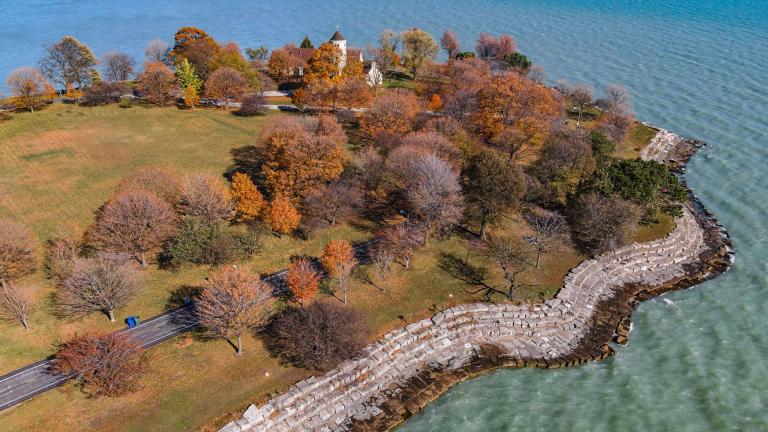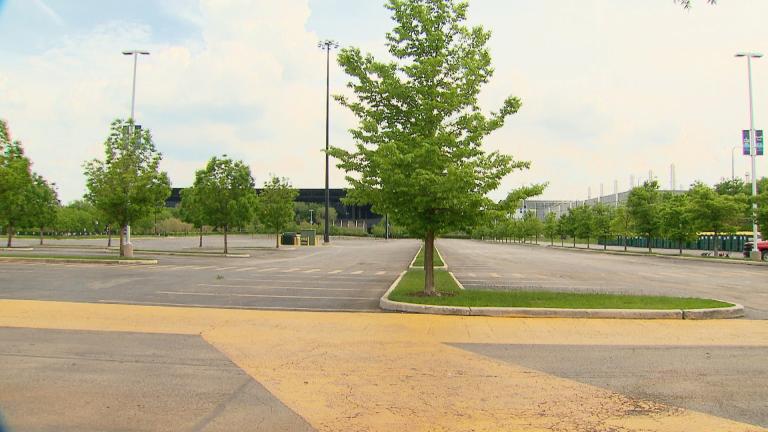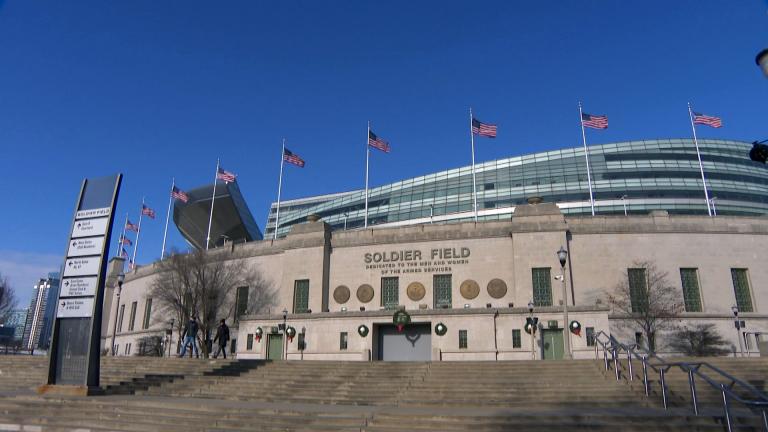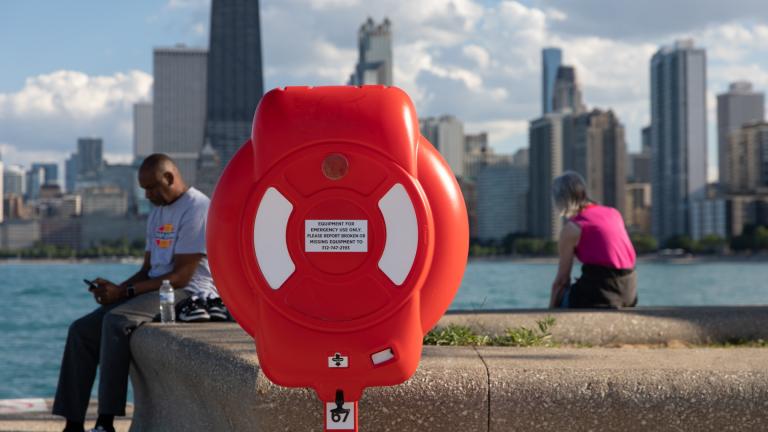Chicago’s lakefront trail has had a bit of a rough year: battered by winter storms, damaged and eroded by high lake levels, closed down by Mayor Lori Lightfoot in the first months of the pandemic. But there is some good news on horizon: the long-awaited Navy Pier flyover appears to be close to completion.
On busy days, as many as a 100,000 people use the lakefront trail. But for years, there was a kind of a missing piece – between Grand and the south end of the Chicago River where it meets Lake Michigan, cyclists and pedestrians had to share a sometimes-cramped sidewalk next to busy lower Lake Shore Drive.
In 2014, officials broke ground on a bike and pedestrian bridge they called the Navy Pier flyover.
“We’re going to make this safer, people are going to enjoy it more, families are going to have a better experience, and we’ll leave something for future generations,” U.S. Sen. Dick Durbin said at the groundbreaking.
But this generation’s been wondering when it’ll be able to enjoy the flyover. Construction was broken into three phases, all of which were supposed to have been wrapped up two years ago. The first two sections, taking cyclists and pedestrians over Grand and Illinois, opened in 2018 and 2019.
The third portion, carrying cyclists and pedestrians over the Chicago River, was supposed to have been completed by the end of last year. But the project ran into some delays, largely to do with unexpected repairs needed to this nearly century-old bridge.
Patrick McBriarty, author of “Chicago River Bridges” and co-producer of the documentary “Chicago Drawbridges,” said the bridge is a key piece of the city’s rich bridge history. “That’s a 1937 bascule bridge designed by Joseph B. Strauss … best known as the chief engineer of the Golden Gate Bridge.”
That bridge, frustrated trail users have pointed out, took less time to build than the Navy Pier Flyover. Because there wasn’t enough room to create separate paths for cyclists and pedestrians on the bridge, “they’re actually tunneling through or taking out a section on level with that path of the two bridge houses,” McBriarty said. “I think part of the problem and why the delay was that this is 1937 construction, which was very well done, but it really hadn’t been touched since it was put up.”
In addition to widening the sidewalk for the trail, crews found they needed to make structural and mechanical repairs to the bascule bridge, a style of counterweight drawbridge the Windy City helped develop and popularize.
“Chicago’s … known in engineering and architectural circles as the drawbridge capital of the world,” McBriarty said.
By the way, bascule comes from the French word for seesaw – which McBriarty says may have originally been derived from a term for falling on your keister.
“I like to think that the bridge itself has the counterweight as, excuse my French, sort of the bottom end or ass end of the bridge, and it falls down to then open the waterway,” McBriarty said.
The Chicago Department of Transportation didn’t have anyone available for an interview, but says it’s making steady progress and is pushing to get the full lakefront trail, including the Navy Pier Flyover, opened by the end of the year.
“Talking to the CDOT engineers, they love these bridges. It’s a unique opportunity to live in a city like this and work on these bridges, which are part of our industrial heritage – some of them are over 100 years old – and yet they’re still operating,” McBriarty said. “It’s a pretty amazing story and rich history that Chicago has around its bridges.”
CDOT says the structural repairs to the bridge are scheduled to wrap up sometime next year. The price tag for the bridge overhaul and flyover came to $64 million in federal and state money.






